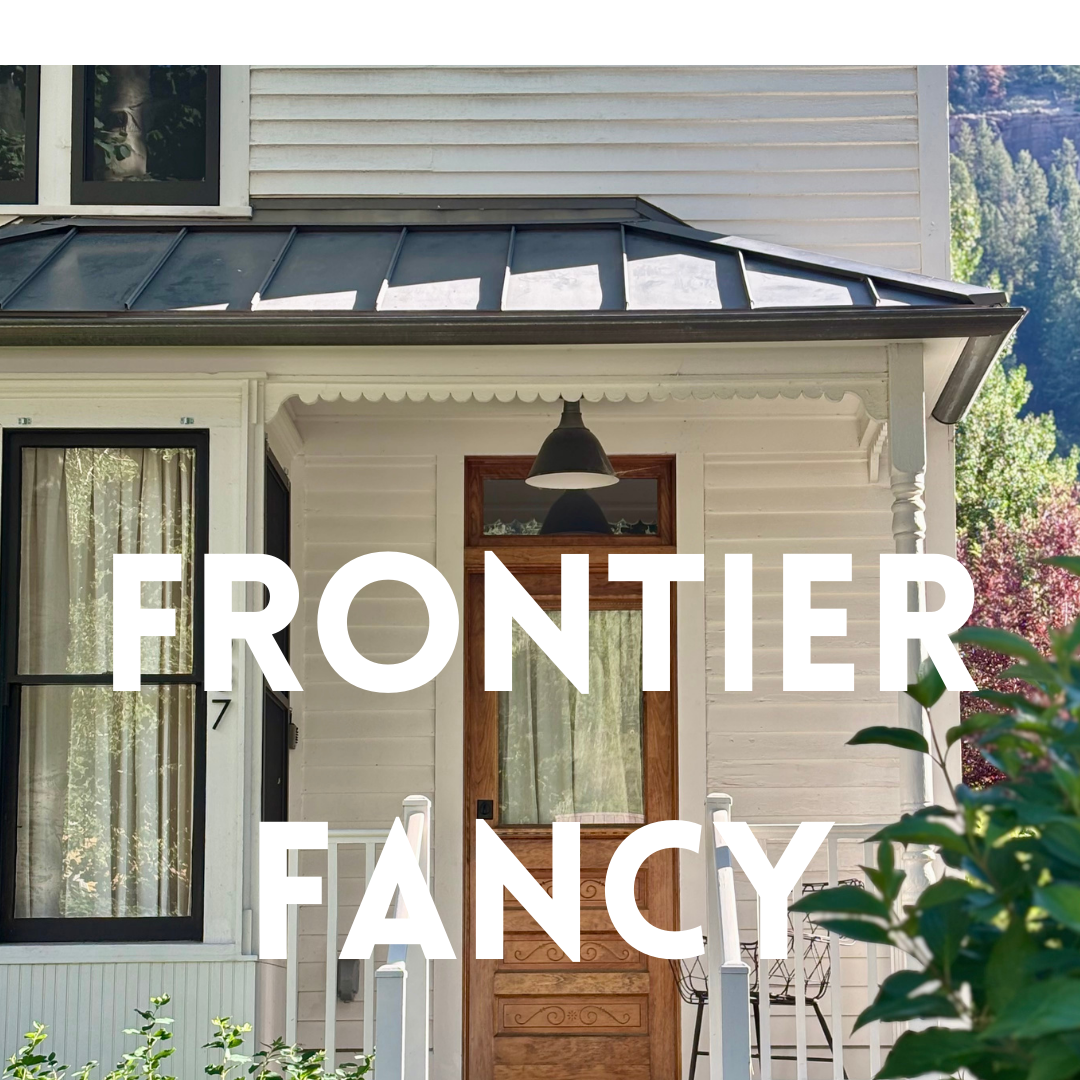
Frontier Fancy
Share
I've always been drawn to gingerbread houses—mainly for the opportunity to lick the walls until the foundation fell in. (Sorry, Mom, that was me). Maybe that's why I love gingerbread trim so much—whether edible or architectural, it delivers both charm and sweetness.
It also tracks that I am in love with Telluride’s Folk Victorian houses. On my most recent trip, I had to ditch my husband in order to really linger on each block, taking pictures like I was casing the whole town. I kept pondering how incredible it is to consider how and why someone built a home this way in 1890s Colorado. Imagine- you're living in a box canyon at 8,750 feet, surrounded by massive peaks. The nearest real city is days away. You could build a perfectly functional house—four walls, a roof, done. But instead, you flip through a catalog and order scrolled brackets, jigsaw-cut bargeboard and spindles that serve no purpose except to make you smile.
We all know the story began with gold. The earliest mining claim was made in the mountains above what would become Telluride in 1875. The San Juan Mountains had revealed their secrets, and people came running. But it wasn't just miners who arrived. As the gold rush gained momentum, hoteliers, merchants, liveries, opera houses, blacksmiths, and ranchers moved in to serve the growing population. When the railroad finally reached Telluride, the remote boom town flourished and spurred a construction boom. Sophisticated building materials and decorative elements came too!
And these ornamental elements weren't frivolous—they were transformative. Every piece of machine-made trim was a tiny rebellion against the idea that frontier life had to be ugly. That practical had to mean plain. That being remote meant settling for less. These weren't the grand architectural statements of the wealthy, but rather accessible beauty that said ordinary people deserved extraordinary touches.
Walking through Telluride now feels like browsing a carefully curated collection of Colorado optimism. These houses survived because their owners understood that decoration isn't frivolous. It says "I care about this place" in a language everyone understands.
I get it completely. I love a seemingly unnecessary detail.
